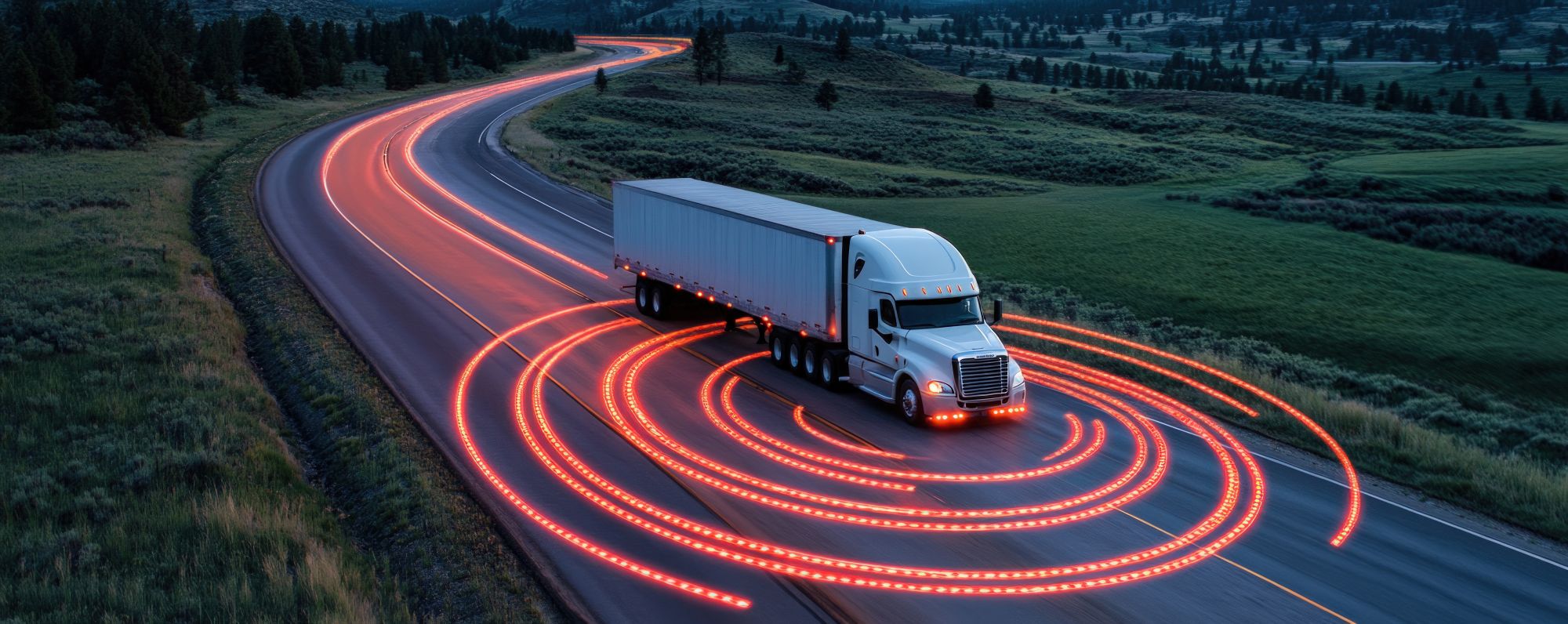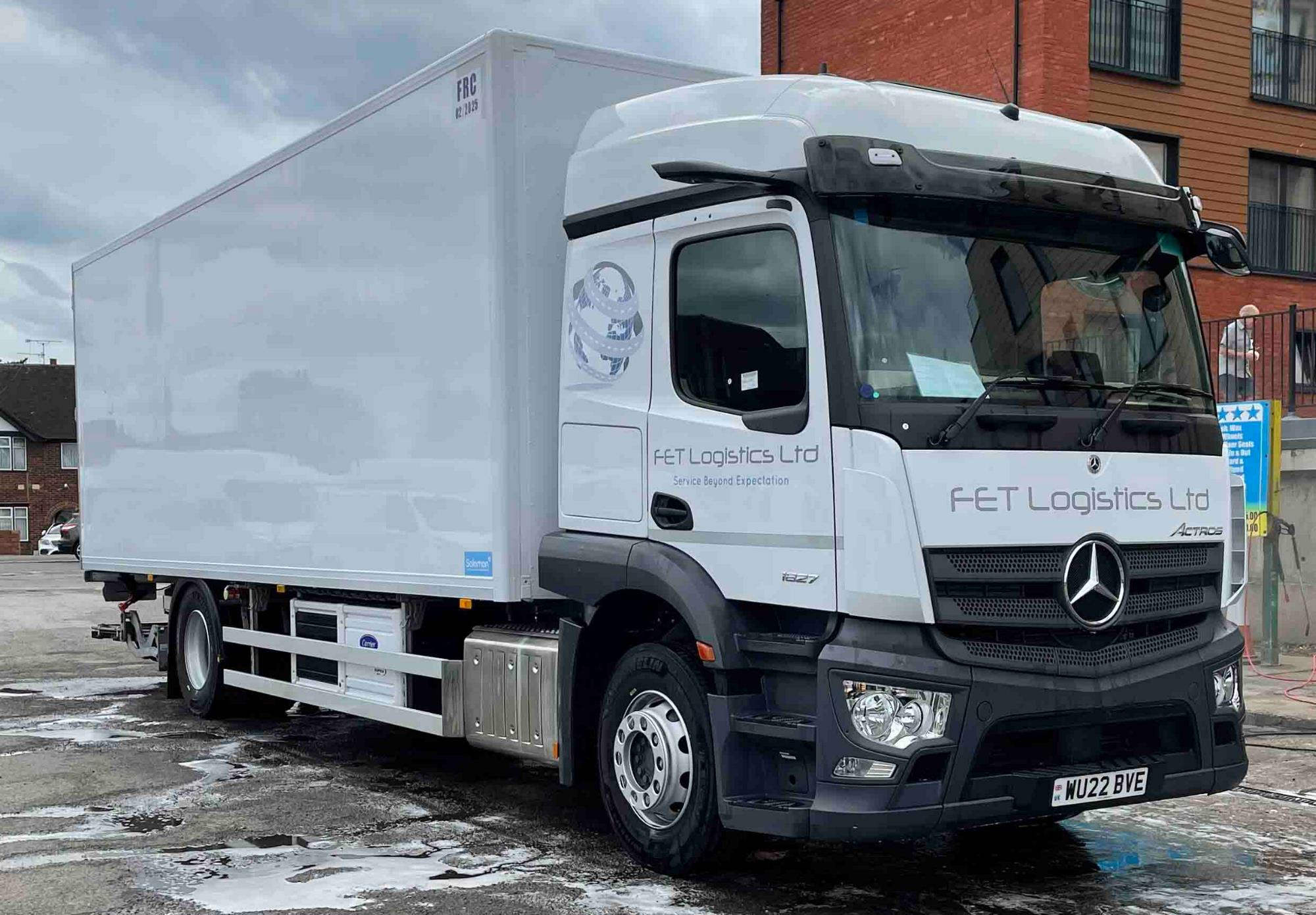
Susie Jones
Camion autonomi: Districarsi nella strada da percorrere
Creato: 16/05/2025
•
Aggiornato: 23/05/2025
Camion autonomi: un'idea scoraggiante per alcuni, ma a quanto pare il futuro dell'industria logistica. Con il progredire della tecnologia nel settore, la prospettiva di avere veicoli parzialmente o completamente autonomi che consegnano le vostre merci è alta. Secondo il governo britannico, infatti, nel maggio 2024 è stata promulgata la legge sui veicoli automatizzati (AV).
Tuttavia, cosa succede quando un camion autonomo ha un incidente? Chi è responsabile? In questo blog approfondiremo il mondo dell'autonomia, il suo impatto sul settore della mobilità, le responsabilità in caso di incidente e l'opinione degli autisti su questo cambiamento.
Quali sono i diversi livelli di automazione?
Esistono sei livelli di automazione della guida:
Livello 0 - Nessuna automazione. L'uomo svolge tutte le attività di guida.
Livello 1 - Assistenza alla guida. Il veicolo è dotato di un unico sistema automatizzato.
Livello 2 - Automazione parziale. Il veicolo è in grado di sterzare e accelerare. Tuttavia, l'uomo continua a monitorare tutte le attività e a prendere il controllo in ogni momento.
Livello 3 - Automazione condizionata. Il veicolo è in grado di eseguire la maggior parte delle operazioni di guida. Tuttavia, è ancora necessario il controllo umano.
Livello 4 - Alta automazione. È richiesto il geofencing e il veicolo può eseguire tutte le attività di guida in circostanze specifiche. Il controllo umano è un'opzione.
Livello 5 - Automazione completa. Il veicolo esegue tutte le operazioni di guida in tutte le condizioni. Non è richiesta alcuna attenzione o interazione da parte dell'uomo.
Come funzionano i camion autonomi?
Sensori, telecamere e intelligenza artificiale consentono ai camion autonomi di guidare in modo indipendente. I programmi avanzati prendono le decisioni al posto dei conducenti umani.
I problemi che il settore potrebbe affrontare
Legalità - Chi è responsabile in caso di incidenti? È il conducente, il suo datore di lavoro o la società di manutenzione? Approfondiamo questo aspetto qui di seguito.
Infrastrutture - Le strade esistenti sono state costruite per un mondo di motori a benzina. Pertanto, le infrastrutture devono essere aggiornate o sostituite per supportare le flotte di veicoli a guida autonoma, il che richiede denaro e una notevole volontà politica.
Cambiamenti sociali - Dovrà verificarsi anche un'evoluzione nell'atteggiamento dell'opinione pubblica. La prospettiva dei veicoli AI è scoraggiante per molti, con preoccupazioni relative alla sicurezza, alla tracciabilità dei viaggi e alle zone d'ombra legali relative agli incidenti stradali.
Sicurezza - Un sistema che si basa su reti digitali diventa più vulnerabile alle minacce informatiche.

Cosa pensano i camionisti dei camion autonomi?
La sicurezza dei camion autonomi è stata un tema di discussione molto acceso nel settore, con molti che discutono se la tecnologia sia in grado di affrontare condizioni meteorologiche imprevedibili e di riconoscere gli ostacoli - un aspetto che preoccupa i camionisti sulle pagine dei social media di SNAP:
"Alla minima pioggia, il mio camion perde tutte le funzionalità automatiche, l'AEBS e il cruise control. Non è possibile che i camion si guidino da soli senza autista in tempi brevi".
"Questo ucciderà più persone sulle strade e causerà più code. Pensate a quanto è affidabile l'elettronica del vostro veicolo Euro 6. Gli stessi che stanno realizzando i camion autonomi". Le stesse persone che stanno producendo camion autonomi".
Legalità: chi è responsabile in caso di incidente?
In caso di incidente, la responsabilità può ricadere sul conducente e sul costruttore. Il tribunale deve stabilire se l'incidente è stato causato da un difetto tecnico, da una manutenzione inadeguata o da un errore del conducente.
Responsabilità del produttore
Il produttore è responsabile nei seguenti casi: - Malfunzionamento del sensore
Problemi di software
Misure di sicurezza informatica inadeguate
Test inadeguati
Responsabilità del conducente/della flotta
Il conducente di un camion autonomo può essere responsabile di un incidente se trascura l'assistenza o la manutenzione necessaria per il corretto funzionamento del veicolo - si potrebbe sostenere che questa responsabilità potrebbe ricadere anche sui gestori delle flotte.
Nonostante ciò, c'è ancora un po' di confusione tra gli operatori del settore della mobilità. Abbiamo chiesto agli autotrasportatori sulle nostre [pagine dei social media] (https://www.facebook.com/snapaccount?locale=en_GB) chi ritengono possa essere ritenuto responsabile in caso di incidente con un veicolo autonomo. Il 51% degli autisti ritiene che il responsabile sia il conducente, il 37% suggerisce i produttori di veicoli automatizzati e il 12% gli sviluppatori di software.
È evidente che sono necessari ulteriori chiarimenti tra gli operatori del settore prima che i camion autonomi diventino una presenza fissa sulle nostre strade.
Come sarà il futuro?
Nella sua campagna TruckPark of the Future rivisitata, SNAP guarda al futuro del settore della mobilità. Con il progredire della tecnologia, i veicoli autonomi svolgeranno un ruolo significativo nel settore, con una probabilità del 50% che le macchine possano prendere il posto di tutti i lavori umani nei prossimi 120 anni.
Tuttavia, come affronteranno alcune delle autostrade più pericolose d'Europa?
La guida dei camion è molto più che stare al volante: spesso si tratta di navigare in condizioni stradali sempre mutevoli e imprevedibili. Si pone la questione se gli autocarri autonomi possano affrontare alcune delle strade più disastrate d'Europa. Nell'ultima campagna [Hazardous Highways] (https://snapacc.com/hazardous-highways/), SNAP ha identificato le strade più pericolose d'Europa, con risultati che indicano Bulgaria, Lituania e Cechia come le più problematiche.
Si potrebbe sostenere che i camion autonomi dovranno affrontare delle sfide nel tentativo di percorrere alcune di queste strade senza l'interazione umana. La limitata precisione del GPS, le interferenze dei sensori e la mancanza di infrastrutture coerenti potrebbero complicare le cose.



